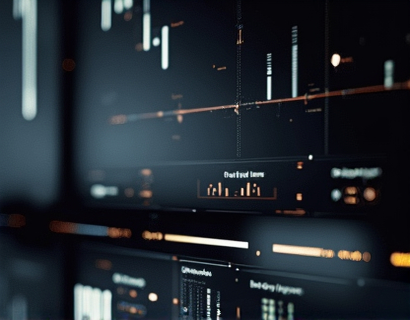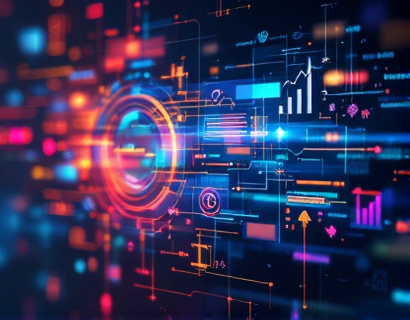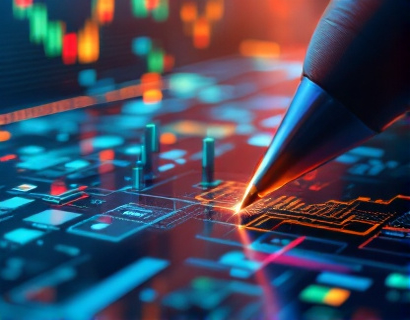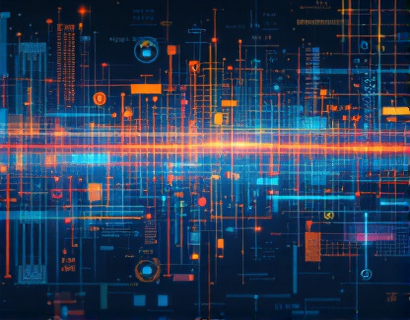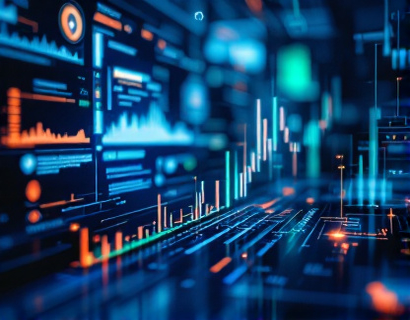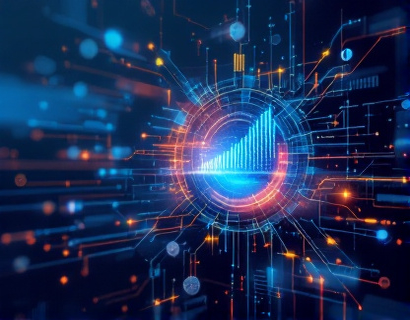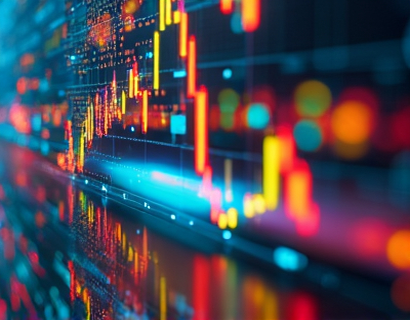Blockchain for Art: Revolutionizing the Tracking and Preservation of Historical Artifacts with Decentralized Solutions
In recent years, blockchain technology has emerged as a transformative force across various industries, and the art world is no exception. This decentralized ledger system offers a secure, transparent, and immutable way to track the authenticity and provenance of historical artifacts and artworks. The application of blockchain in the art sector is revolutionizing how collectors, museums, and cultural institutions manage and preserve their valuable assets, ensuring secure ownership and fostering trust among all stakeholders.
The traditional methods of verifying the authenticity and provenance of artworks are often cumbersome, prone to errors, and susceptible to fraud. This is where blockchain technology steps in, providing a robust solution. By recording each transaction and ownership change on a blockchain, a permanent and tamper-proof record is created. This not only enhances the traceability of artworks but also helps in preventing forgeries and illegal transactions.
Enhancing Provenance with Blockchain
Provenance, or the history of ownership and exhibition of an artwork, is crucial for establishing its authenticity and value. Blockchain technology streamlines the process of documenting and verifying provenance. Each piece of art can be assigned a unique digital identity, with all relevant information such as creation date, previous owners, and exhibition history stored on the blockchain. This digital provenance is accessible to authorized parties, ensuring transparency and reducing the risk of fraud.
The immutability of blockchain ensures that once information is recorded, it cannot be altered or deleted. This feature is particularly valuable in the art world, where the authenticity of a piece can significantly impact its value. For instance, a painting attributed to a renowned artist can command a higher price if its provenance is verifiable and unbroken. Blockchain provides an unassailable record that collectors and institutions can trust.
Secure Ownership and Transactions
Ownership of artworks is a critical aspect that blockchain technology addresses effectively. Traditional ownership records are often stored in physical documents or decentralized databases, making them vulnerable to loss, damage, or tampering. Blockchain offers a decentralized and secure way to manage ownership records. Each transfer of ownership is recorded as a transaction on the blockchain, creating an unbreakable chain of custody.
Smart contracts, self-executing contracts with the terms directly written into code, can automate and enforce the rules of ownership transfer. These contracts can include conditions such as payment verification, legal compliance, and ownership transfer notifications. This automation reduces the need for intermediaries, lowering transaction costs and speeding up the process. For example, when an artwork is sold, the smart contract can automatically update the ownership record and notify all relevant parties, ensuring a seamless and secure transaction.
Fostering Trust and Collaboration
The art market is characterized by a complex network of collectors, dealers, museums, and cultural institutions. Trust is a fundamental component of these relationships, and blockchain technology enhances trust by providing a transparent and verifiable record of all transactions. This transparency reduces the risk of disputes and fraud, fostering a more collaborative environment.
For museums and cultural institutions, blockchain can help in verifying the authenticity and legal status of artworks before acquisition. This is particularly important for institutions that receive donations or purchases from private collectors. By accessing the blockchain record, museums can ensure that the artwork has a clear and legal provenance, avoiding potential legal issues and reputational damage.
Preservation of Cultural Heritage
The preservation of cultural heritage is a global concern, and blockchain technology can play a significant role in this effort. By providing a secure and transparent way to document and track historical artifacts, blockchain helps in monitoring their condition and location. This is especially crucial for artifacts that are prone to theft or damage, such as those in conflict zones or areas with poor governance.
Blockchain can also facilitate international cooperation in the preservation of cultural heritage. For instance, digital records of artifacts can be shared among multiple institutions, enabling collaborative restoration projects and exhibitions. This global collaboration ensures that cultural heritage is preserved and appreciated by a wider audience.
Challenges and Considerations
While the potential benefits of blockchain in the art world are significant, there are also challenges and considerations that need to be addressed. One of the primary challenges is the adoption rate. The art market is traditionally conservative, and many stakeholders may be hesitant to embrace new technology. Education and demonstration of the tangible benefits of blockchain are essential to drive adoption.
Another challenge is the integration of blockchain with existing systems. Many art institutions have established databases and records that need to be compatible with blockchain technology. This requires significant technical effort and investment. However, as blockchain technology matures, more solutions will emerge to facilitate seamless integration.
Privacy is also a concern, as blockchain's transparency can sometimes conflict with the need for confidentiality in certain transactions. To address this, privacy-enhancing technologies such as zero-knowledge proofs can be used to maintain confidentiality while still ensuring the integrity of the blockchain.
Case Studies and Real-World Applications
Several initiatives and platforms are already leveraging blockchain to revolutionize the art market. One notable example is the use of blockchain for verifying the authenticity of high-end watches and art pieces. Companies like WAX and Aura are using blockchain to create digital certificates of authenticity for luxury items, providing collectors with a secure and verifiable record of ownership.
In the museum sector, projects like the Blockchain for Cultural Heritage initiative are exploring how blockchain can be used to track and preserve cultural artifacts. This project aims to create a decentralized database of cultural heritage items, accessible to researchers and institutions worldwide. Such initiatives not only enhance the preservation of cultural heritage but also promote global collaboration and access to knowledge.
Future Prospects
The future of blockchain in the art world looks promising. As more stakeholders recognize the benefits of this technology, adoption is likely to increase. The development of more user-friendly platforms and the integration of blockchain with other emerging technologies, such as the Internet of Things (IoT) and artificial intelligence (AI), will further enhance its capabilities.
For instance, IoT devices can be used to monitor the environmental conditions of stored artworks, with the data recorded on the blockchain to ensure optimal preservation. AI can analyze blockchain data to identify patterns and predict trends in the art market, providing valuable insights to collectors and institutions.
In conclusion, blockchain technology is poised to transform the art world by providing a secure, transparent, and decentralized solution for tracking and preserving historical artifacts and artworks. By enhancing provenance, securing ownership, fostering trust, and promoting collaboration, blockchain is helping to safeguard our shared cultural heritage for future generations.



